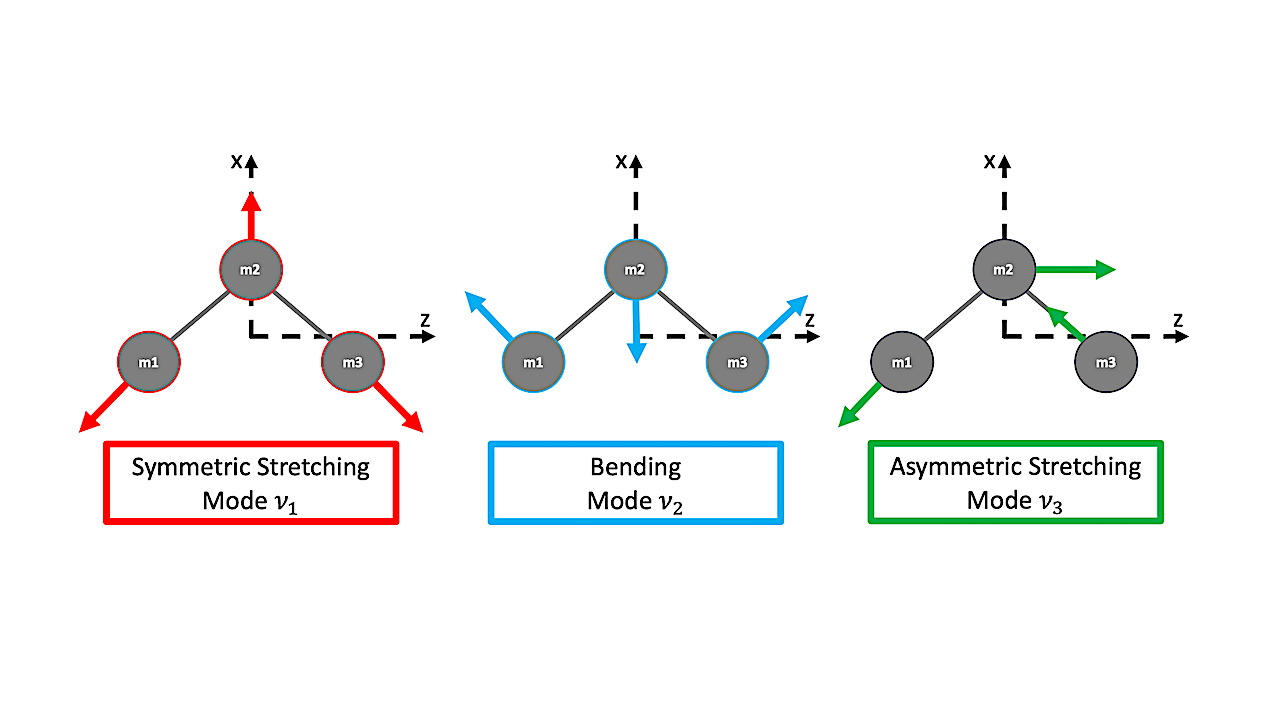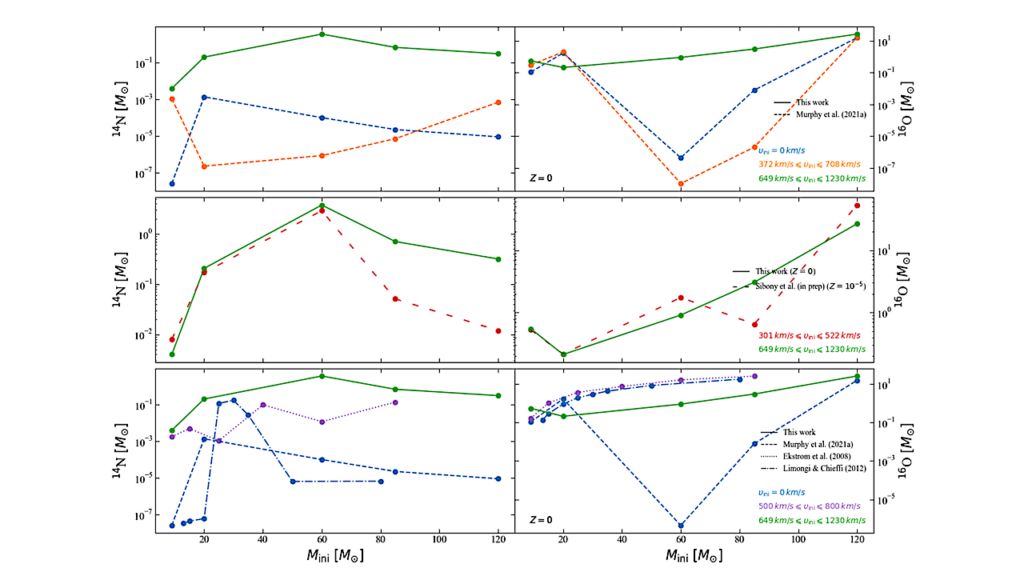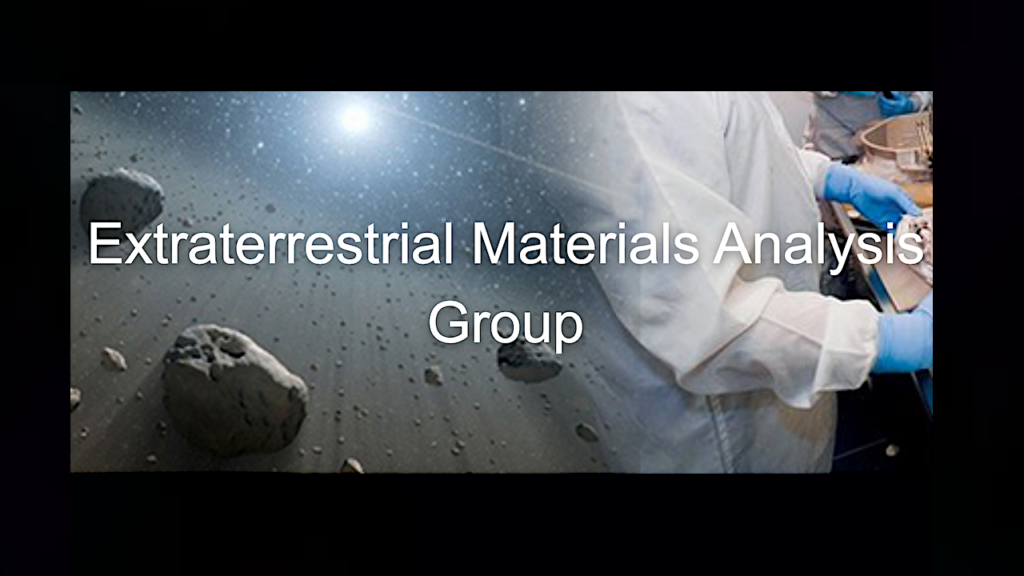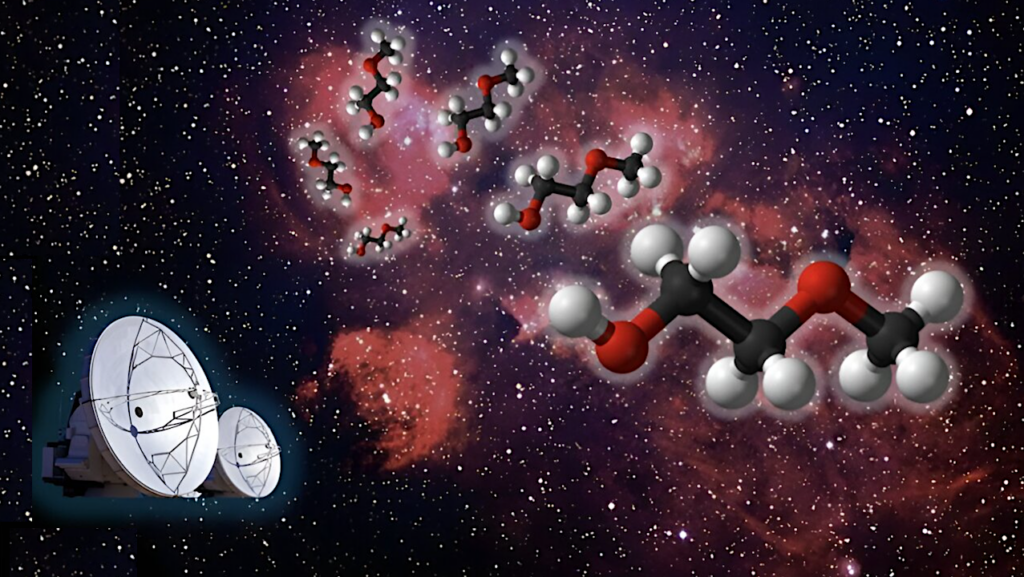Modelling Triatomic Biosignatures: Ozone and Isotopomers

In this work we present a new approach to produce spectroscopic constants and model first-principles synthetic spectra for all molecules of astrophysical interest. We have generalized our previous diatomic molecule simulation framework, employing Transition-Optimised Shifted Hermite (TOSH) theory, thereby enabling the modelling of polyatomic rotational constants for molecules with three or more atoms. These capabilities, are now provided by our new code Epimetheus.
As a first validation of our approach, we confront our predictions and assess their accuracy against the well-studied triatomic molecule, ozone 666 (16O3), in addition to eight of its potential isotopomers: ozone 668 (16O16O18O), 686 (16O18O16O), 667 (16O16O17O), 676 (16O17O16O), 688 (16O18O18O), 868 (18O16O18O), 888 (18O3), and 777 (17O3). We then assess the accuracy of these rotational constants using the Epimetheus data in our code Pandora, and generate synthetic molecular spectra.
The ozone spectra presented here are purely infrared and not Raman. Epimetheus builds upon the work from our previous code Prometheus, which used the TOSH theory to account for anharmonicity for the fundamental ν=0→ν=1 band, going further to now account for triatomic molecules. This is combined with thermal profile modeling for the rotational transitions.
We have found that this extended method performs promisingly, typically approximating the spectroscopic constants and spectra well. Some issues do arise depending on the symmetry group of the ozone isotopomer. In general, we show that Epimetheus can provide the data to produce appreciable molecular spectra, to help drive future high-resolution studies.
Thomas M. Cross, David M. Benoit, Marco Pignatari, Brad K. Gibson
Comments: 26 pages, 6 figure, 10 tables — Submitted to ApJ; comments from the community welcomed!
Subjects: Chemical Physics (physics.chem-ph); Earth and Planetary Astrophysics (astro-ph.EP); Astrophysics of Galaxies (astro-ph.GA); Instrumentation and Methods for Astrophysics (astro-ph.IM)
Cite as: arXiv:2403.05442 [physics.chem-ph] (or arXiv:2403.05442v1 [physics.chem-ph] for this version)
https://doi.org/10.48550/arXiv.2403.05442
Focus to learn more
Submission history
From: Thomas Cross
[v1] Fri, 8 Mar 2024 16:51:47 UTC (6,640 KB)
https://arxiv.org/abs/2403.05442
Astrobiology,








